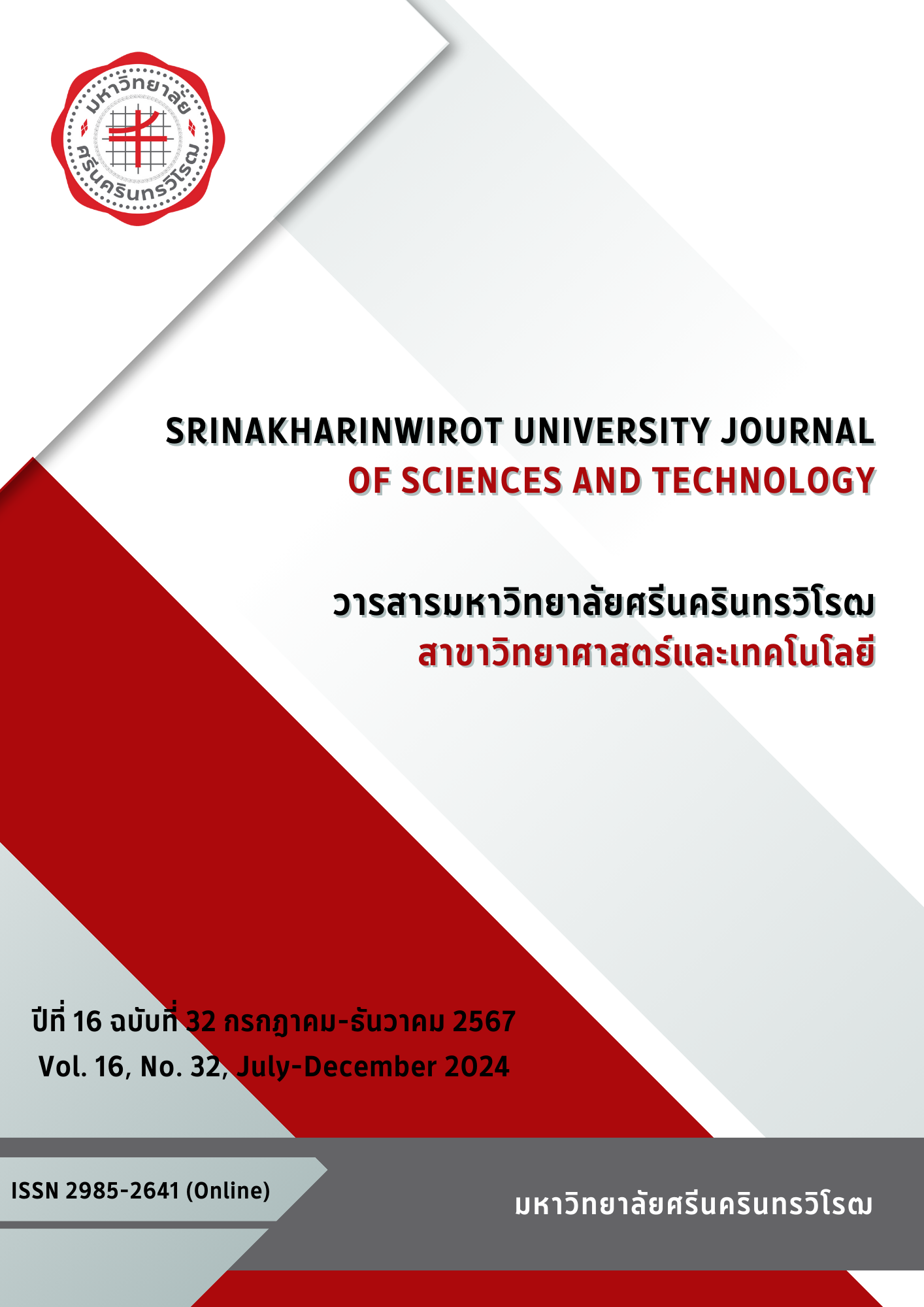STUDY OF AMYLOSE CONTENT THAT AFFECT GEL CONSISTENCY (GC) AND THE TEXTURE CHARACTERISTICS OF VARIOUS RICE VARIETIES IN CULTIVATION AREAS, NAKHON SAWAN PROVINCE
Keywords:
Rice, Amylose, Gel ConsistencyAbstract
Study of amylose content that affects the viscosity of the starch gel and texture characteristics of various rice varieties in the growing areas of Nakhon Sawan Province. The research aimed to compare the amylose content, influencing the viscosity of starch gel and the texture of rice across various varieties. Using spectroscopy and the gel consistency (GC) method, the study analyzed 26 rice samples representing different varieties. The focus was on comparing the amylose content that affects rice starch gel viscosity. During the dry-season cultivation RD31 stood out with the highest amylose content (18.98 percentage) and a medium gel consistency of 42.17 millimeters, indicating a rice variety with moderate hardness. The wet-season cultivation Niaw Wan and Niaw Dang, both with low amylose content (8.95 and 8.94 percentage, respectively), demonstrated soft rice textures with gel consistencies of 74.30 and 75.47 millimeters, respectively, which is rice that has a low level of hardness or softness. This shows that in the wet-season cultivation, Niaw Wan and Niaw Dang have higher starch gel viscosity values than the dry-season cultivation RD31, which is significantly different (p<0.05). This research contributes to understanding the quality characteristics of rice, particularly in terms of rice texture, which can have culinary applications.
Downloads
References
Bureau of Agricultural Economic Research. (2021). Agricultural economic situation: Rice. Journal of Agricultural Economics, 772, 14-26. (In Thai).
Phapumma, A., Monkham, T., Sanitchon, J., and Chankaew, S. (2020). Evaluation of amylose content, textural properties and cooking qualities of selected glutinous rice. Khon Kaen Agriculture Journal, 48(3), 597-606. (In Thai).
Rattanapol, P., and Sreewongchai, T. (2012). Development of amylose content analysis in rice grain using small amount of sample. Proceedings of 50th Kasetsart University Annual Conference: Agricultural Extension and Home Economics: (Plants, Volume 420). (pp. 385-390). n.p. (In Thai).
Osatanon, R. (2007). Grain technology operations. Bangkok: Department of food technology, faculty of science, Ramkhamhaeng University. n.p. (In Thai).
Juliano, B. O. (1971). A simplified assay for milled-rice amylose. Cereal Science Today, 16, 334-338.
Divistion of Rice Research and Development. (2016). Rice knowledge bank. Rice Department. Retrieved May 21, 2023, from https://newwebs2.ricethailand.go.th/webmain/rkb3/title-index.php-file=content.php&id=3-2.htm#top (In Thai).
Downloads
Published
How to Cite
Issue
Section
License
Copyright (c) 2024 Srinakharinwirot University Journal of Sciences and Technology

This work is licensed under a Creative Commons Attribution-NonCommercial-NoDerivatives 4.0 International License.
Srinakharinwirot University Journal of Sciences and Technology is licensed Under a Creative Commons Attribution-NonCommercial-NoDerivs 4.0 International (CC-BY-NC-ND 4.0) License, Unless Otherwise Stated. Please Read Journal Policies Page for More Information on Open Access, Copyright and Permissions.



